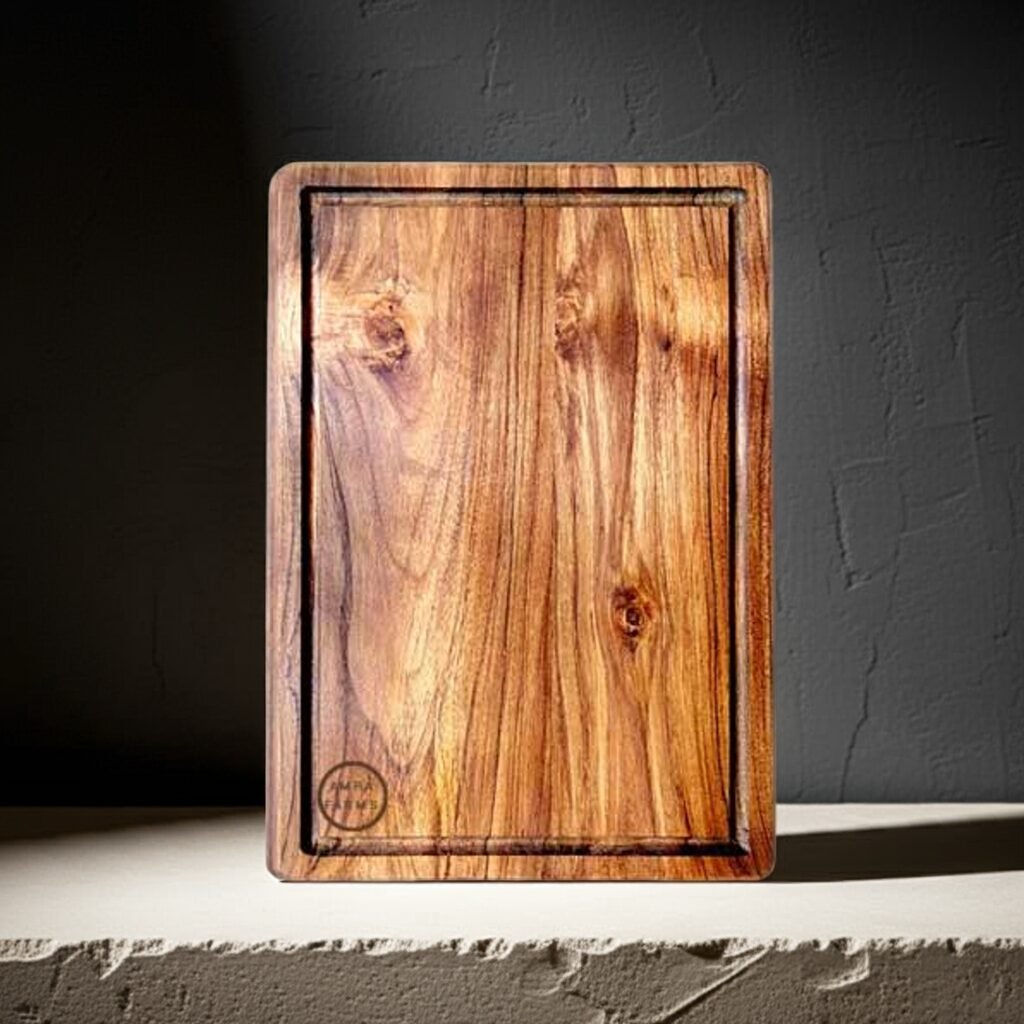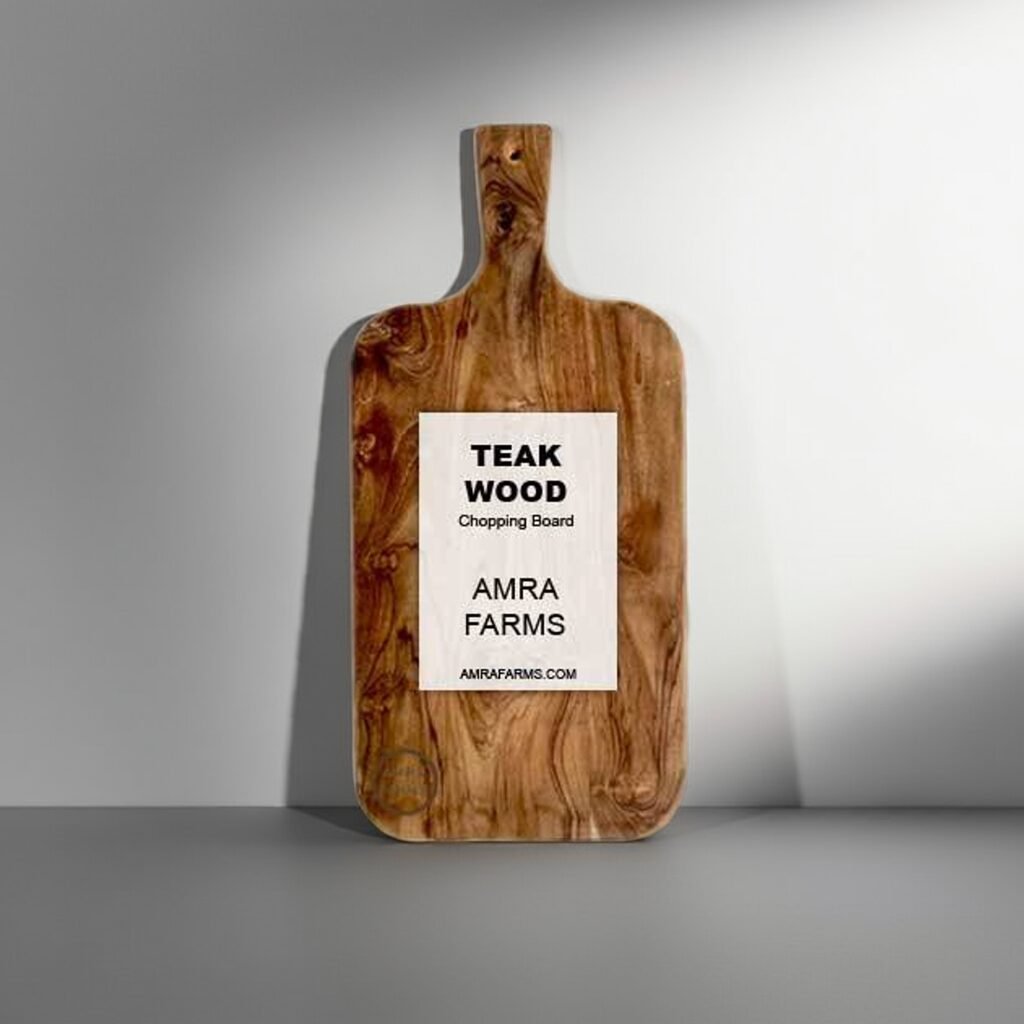Your cart is currently empty!
Why Some Woods are Better than Others in the Kitchen
Wooden cutting boards are great. But they are also confusing. The problem with wooden cutting boards is that there are at least 10 prominent woods which are commonly available apart from hundreds of unnamed wood. Many wooden cutting boards are just advertised as “wooden Cutting Board” with no information on the wood used. Customers buy the wood based on the images put on their website, Amazon or Flipkart to find a product which is pretty but forms cracks, scratches and warps in a few months if not weeks.






While investing in a wooden cutting board you have to know which wood you are using, at least you need to know if the wood is a hardwood or softwood.
Hardwood vs Softwood cutting boards: Strength actually matters
Hardwood chopping boards like that made of teak are dense and durable. Their fibres are very close, preventing scratches. They stand up to daily chopping without getting gouged easily. Hardwoods are from slow-growing trees and are usually expensive.
Softwood on the other hand wears down quickly and can become bacteria magnets with those deep cuts. They absorb more moisture and are not durable. Pine is an example of softwood. To test if the wood is a hardwood or a softwood, use a coin to try and scratch the surface with medium pressure. Softwood will leave a mark, clearly visible. The same pressure on the hardwood may just leave a scratch which may barely be visible.
Open grain vs closed grain: Density matters
Woods are characterised by their grain patterns. Closed-grained woods are dense and have smaller pores preventing water absorption. Woods like teak and maple are common closed-grain woods. Teak is dense and the grains are close, making it very heavy. Open-grain woods have larger pores and have a higher chance of absorbing water. Mango wood chopping boards, for instance, is an open-grained wood. Open-grain woods have a tendency to absorb moisture, making it a playground for fungal growth, mould and bacteria. To prevent growth of bacteria and make it resistant to mould, application of oil is very important in open-grained wood.
Knife friendly surface to keep them sharp
Some woods are extremely hard while others are too soft. Softwoods are not durable and can be a problem with bacterial growth, mould and fungal growth. Hardwoods, on the other hand, will dull your knives faster and shorten the life of your knives. Finding the balance is key to maintaining your knife’s life. Mango wood is just right for your knives. Teak is slightly harder and bamboo is really hard.
Water resistance – wood that won’t warp
Teak wood is a perfect example of a water-resistant wood. Used in boat building, teak is rich in its natural oil preventing water absorption. Woods like mango could retain water in them and when they lose water rapidly, tend to warp and crack too. Look for woods that are high in natural oils. Woods like mango should be treated regularly with oil to prevent water absorption and warping.
Sustainability and Source
Bamboo is one of the most sustainable materials for chopping boards. With an abundance of bamboo in India, bamboo cutting boards top the list when it comes to sustainability. Mango is a wood that is cut down every 30 to 40 years and is replanted, making it renewable wood and thus sustainable. Teak is slowly becoming more and more sustainable with increased teak plantations all over the country.
If you are looking for a wood that is sustainable, mango is always considered the best option. They are more durable, soft on the knives and sustainable too. Teak is the best option if you are not price conscious and are looking for a dense wood which is antibacterial, water resistant and extremely durable.
Categories
Products
- Buy Wooden Vegetable Cutting Boards Online
- Wooden Kitchen Accessories & Tools
- Buy Butcher Block & Meat Cutting Boards Online
- Buy Premium Wooden Chopping Boards Online
- Buy The Best Teak Wood Cutting Boards Online In India
- Buy Wooden Cutting Boards With Handle For Kitchen
- Mango Wood Chopping Boards
- Tamarind Wood Chopping Boards
- Wooden Platter Boards , Pizza Platters & Charcuterie Boards
Recent Posts
- Why is tamarind wood Preferred for cutting meat and vegetables in India?
- Wooden chopping boards, the construction and trends that affect your purchase
- Market and usage statistics on wooden chopping boards – Fascinating Market insights and trends you can’t ignore
- Chopping Boards for Traditional Indian Pickling – Avoiding Contamination with Tamarind & Teak Boards
- Are Imported Wooden Chopping Boards Overrated? Why Indian Woods Perform Better in Local Conditions
